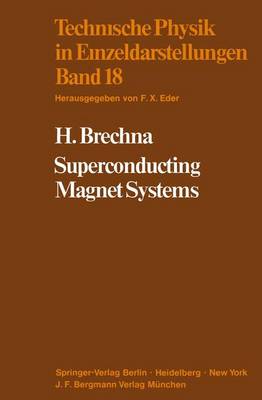Technische Physik in Einzeldarstellungen
1 primary work
Book 18
The renaissance of magnet technology started in the early 1950s with the establishment of high-energy accelerators. About a decade later in 1961, or fifty years after the discovery of superconductivity, high-field superconducting laboratory magnets became a reality. Conventional still the major beam-handling and experimen- electromagnets, which are tal devices used in laboratories, operate at zero efficiency. To generate high magnetic fields in a useful volume, considerable amounts of power are needed. Superconducting d. c. magnets do not require any power at all. It is somewhat depressing to note that, sixty years after the first superconductor was tested, the experimental d. c. superconducting mag- net is still the only large-scale equipment operated in laboratories. Al- though there has been considerable activity in the area of superconduc- tivity, superconductors are used on quite a modest scale in electronic and quantum devices, in medicine and biology, and in physical experi- ments where high magnetic fields are essential.
It is only recently that Type II superconductors have been introduced in power engineering (power generation, storage and transport) to replace pulsed accelerator magnets; for fast and economical transportation vehicles (levitated trains) where superconductors may ultimately replace the wheel; to make new means of en~rgy generation economically feasible, such as in magneto- hydrodynamics and in fusion reactors; and for high-efficiency electric motors. High-field superconducting magnets are being proposed for de- salination of seawater, for magnetic separation in the mining industry, for cleaning polluted water, and for sewage treatment.
It is only recently that Type II superconductors have been introduced in power engineering (power generation, storage and transport) to replace pulsed accelerator magnets; for fast and economical transportation vehicles (levitated trains) where superconductors may ultimately replace the wheel; to make new means of en~rgy generation economically feasible, such as in magneto- hydrodynamics and in fusion reactors; and for high-efficiency electric motors. High-field superconducting magnets are being proposed for de- salination of seawater, for magnetic separation in the mining industry, for cleaning polluted water, and for sewage treatment.
